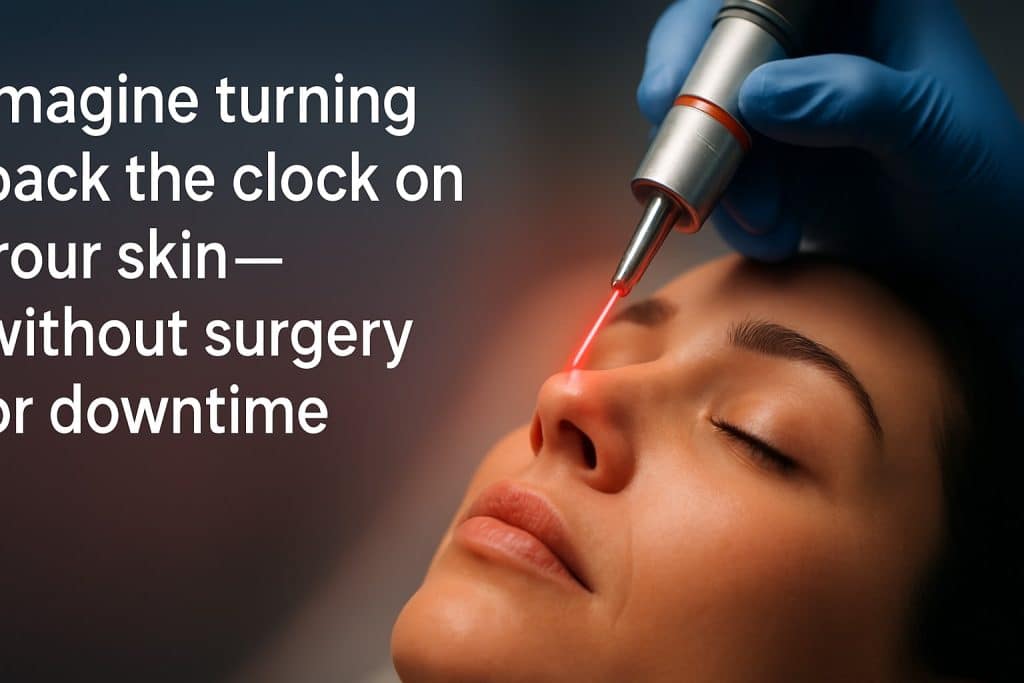Imagine turning back the clock on your skin without surgery or downtime. In 2025, the demand for non-invasive skin rejuvenation is at an all-time high as more people seek safe, effective ways to refresh their appearance.
Laser therapy for skin rejuvenation is emerging as a breakthrough solution for aging, sun damage, and uneven skin texture. With advanced techniques, you can achieve smoother, younger-looking skin and natural results.
This essential 2025 guide will walk you through everything you need to know: the core benefits, the latest technology, who is a candidate, step-by-step procedures, results, risks, and aftercare. Get ready to discover your best skin yet.
Understanding Laser Therapy for Skin Rejuvenation
Laser therapy for skin rejuvenation has transformed the landscape of cosmetic dermatology. This innovative approach uses focused beams of light to target specific skin concerns with precision. Over the past three decades, laser treatments have evolved from basic resurfacing tools to sophisticated devices capable of addressing a broad range of skin issues. Unlike microneedling or chemical peels, which rely on mechanical or chemical exfoliation, laser therapy for skin rejuvenation works at a deeper level, stimulating natural repair processes within the skin itself. Some believe lasers are too harsh or only suitable for lighter skin tones, but modern advancements have made these treatments safer and more inclusive. For a deeper dive into the different methods available, you can explore Laser Skin Resurfacing in Toronto, which outlines professional approaches to skin renewal.
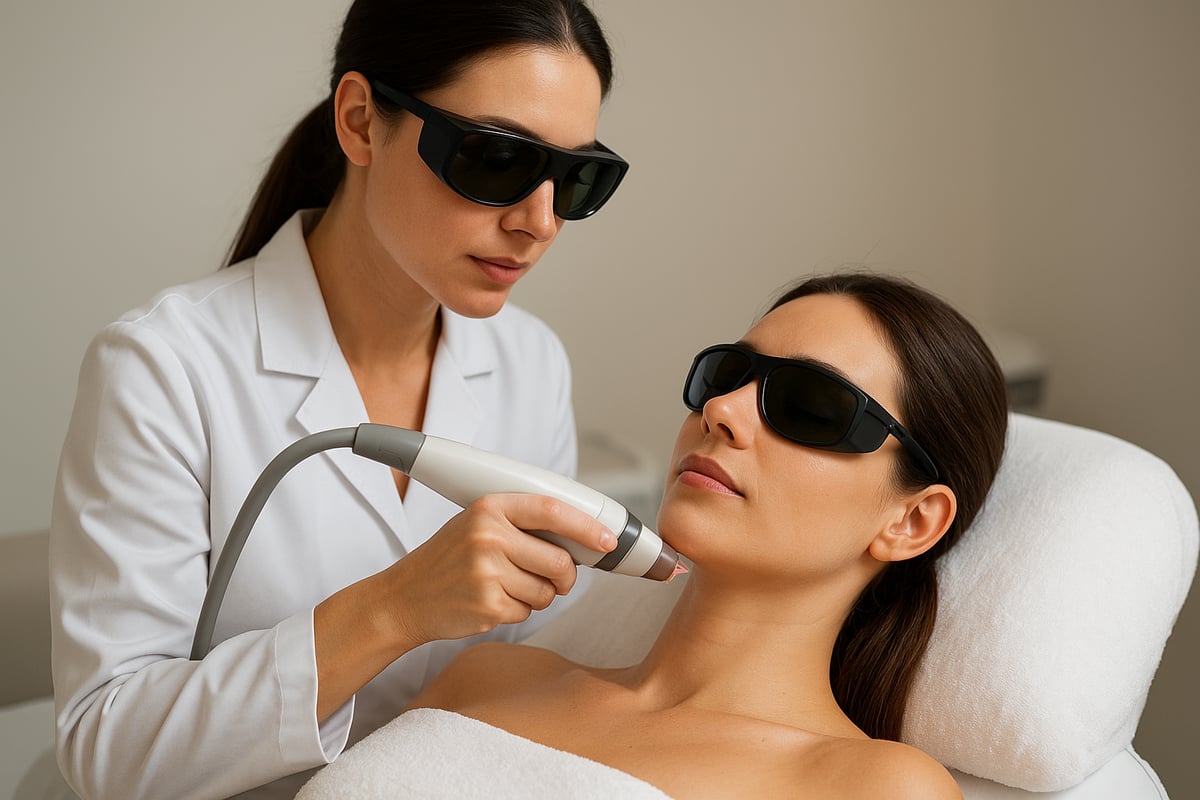
What is Laser Therapy?
Laser therapy for skin rejuvenation refers to the application of concentrated light energy to the skin to improve its tone, texture, and overall appearance. The journey of lasers in dermatology began in the late 20th century with basic resurfacing procedures. Today, technology has advanced, allowing practitioners to treat a wide variety of concerns with remarkable accuracy. Unlike microneedling, which uses tiny needles to induce collagen, or chemical peels, which exfoliate using acids, laser therapy for skin rejuvenation delivers energy directly into the skin layers. This process is often misunderstood as overly aggressive or painful, but most patients experience only minimal discomfort and downtime. By understanding what sets laser therapy apart, patients can make informed choices about their skin health.
How Laser Therapy Works for Skin Rejuvenation
The science behind laser therapy for skin rejuvenation centers on the unique wavelengths of light used to penetrate the skin. Different wavelengths target various layers, from the superficial epidermis to the deeper dermis. When the laser energy is absorbed, it heats the tissue, triggering collagen production and cellular renewal. There are several types of lasers: ablative lasers remove outer skin layers for dramatic results, while non-ablative lasers work beneath the surface with less downtime. Fractional lasers create micro-injuries to promote healing, and IPL (intense pulsed light) targets pigmentation and redness. In 2025, advancements mean treatments are faster, more comfortable, and tailored to individual needs. For instance, fractional CO2 lasers excel at deep resurfacing, while IPL is ideal for addressing pigmentation and sun damage.
Key Benefits and Expected Outcomes
Laser therapy for skin rejuvenation offers a wide spectrum of benefits, making it a top choice for those seeking youthful, radiant skin. Patients often notice a reduction in fine lines, wrinkles, and sunspots after just a few sessions. Improvements in skin texture, tone, and firmness are also commonly reported. According to clinical studies, up to 80 percent of patients see significant clarity in their skin after three treatments. One major advantage is the minimal downtime compared to surgical options, allowing individuals to return to daily activities quickly. The versatility of laser therapy for skin rejuvenation means it is suitable for a variety of skin types and tones. With proper aftercare and maintenance, results can last for months or even years, making this treatment both effective and lasting.
Who is an Ideal Candidate?
The ideal candidate for laser therapy for skin rejuvenation typically falls between the ages of 25 and 65. Common concerns addressed include visible signs of aging, acne scars, and hyperpigmentation. However, not everyone is suitable for these treatments. Contraindications include pregnancy, certain medications, and active skin infections. The Fitzpatrick skin type scale helps practitioners determine which lasers are best for each individual, ensuring safe and effective results. A thorough professional consultation is essential to assess candidacy, discuss expectations, and create a personalized plan. By working with a qualified provider, patients can maximize the benefits of laser therapy for skin rejuvenation while minimizing potential risks.
Latest Laser Technologies and Trends in 2025
The landscape of laser therapy for skin rejuvenation is evolving rapidly in 2025. New devices and smarter technology are making treatments safer, more effective, and accessible for all skin types. Let us explore how the latest advancements are shaping the future of skin rejuvenation.
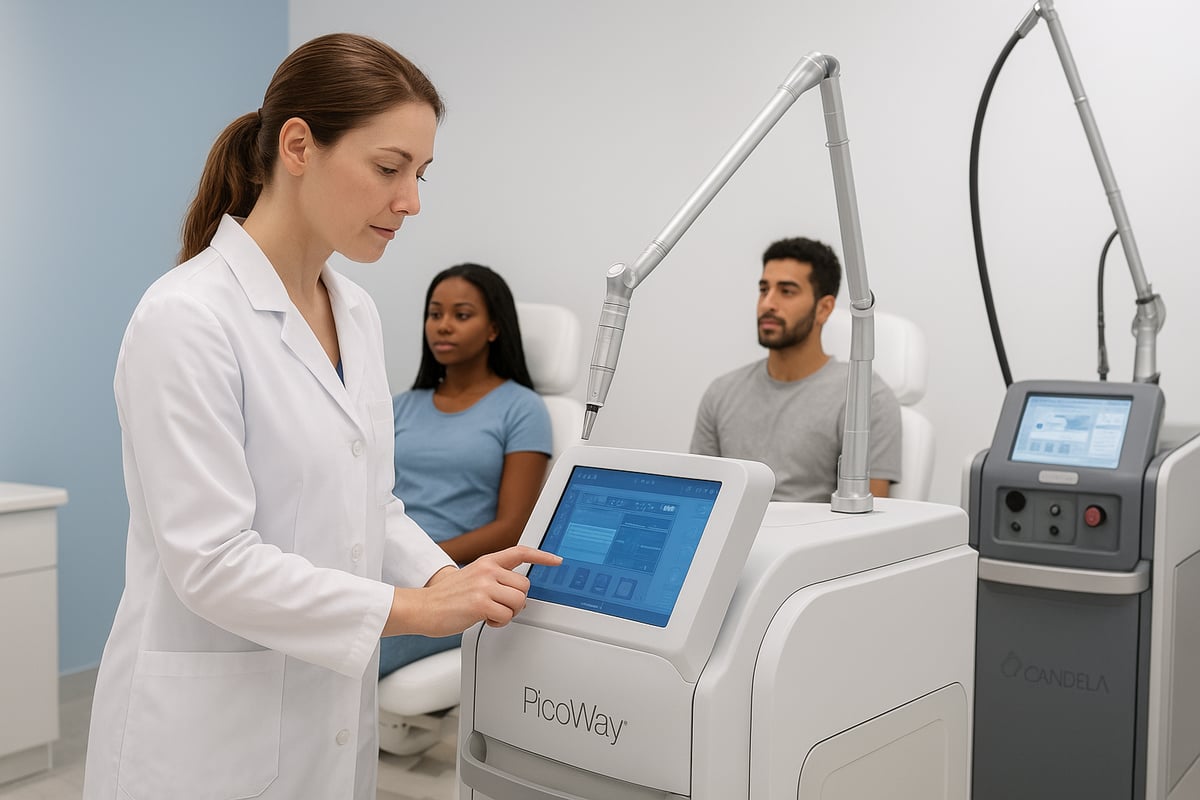
Breakthrough Devices and Innovations
In 2025, laser therapy for skin rejuvenation is defined by a new generation of sophisticated devices. Systems like PicoWay and CANDELA GentleMax Pro Technology are setting new standards for precision and safety. These platforms offer a range of wavelengths, allowing practitioners to address multiple concerns such as pigmentation, fine lines, and skin laxity in one session.
Innovations in cooling systems have greatly improved patient comfort. Modern lasers now feature dynamic cooling, which helps protect the skin and minimizes discomfort during procedures. Another advancement is the integration of artificial intelligence, enabling devices to analyze individual skin characteristics and personalize treatment settings.
Dual-platform lasers are becoming more common. These systems combine two or more wavelengths, making it possible to target both surface imperfections and deeper tissue for comprehensive results. For example, a single session can address both tone and texture irregularities, leading to more dramatic improvements.
Multi-wavelength technology, rapid pulse durations, and enhanced safety features all contribute to faster, more predictable outcomes. As a result, laser therapy for skin rejuvenation is more versatile and efficient than ever before.
Tailoring Treatments for Diverse Skin Types
Inclusivity is a top priority in laser therapy for skin rejuvenation. Devices in 2025 are designed with customizable settings to treat a wider range of skin tones and sensitivities safely. This is especially important for individuals with darker complexions, who previously faced higher risks of pigmentation changes.
Modern lasers can adjust energy levels, pulse durations, and cooling based on the Fitzpatrick skin type scale. This adaptability reduces the likelihood of side effects and ensures optimal results for every patient. Sensitive skin types also benefit from gentler protocols and advanced monitoring during each session.
Recent data shows a significant increase in efficacy and safety for diverse populations using these new technologies. Patients are experiencing fewer complications and more even outcomes, making laser therapy for skin rejuvenation a reliable choice for all.
Combination Therapies: Maximizing Results
To maximize the benefits of laser therapy for skin rejuvenation, combination approaches are gaining popularity. Pairing lasers with microneedling, platelet-rich plasma (PRP), or chemical peels can address multiple concerns at once, such as acne scars and uneven pigmentation.
For example, a treatment protocol might begin with IPL to target pigmentation, followed by microneedling to stimulate collagen and improve texture. This sequential approach enhances overall results and can be tailored to stubborn conditions.
Clinical evidence supports the effectiveness of these combination therapies. Patients often report faster improvements and higher satisfaction rates compared to single-modality treatments. The synergy between procedures delivers comprehensive skin rejuvenation with minimal downtime.
Safety Enhancements and Patient Comfort
Safety and comfort are at the forefront of every innovation in laser therapy for skin rejuvenation. Devices now feature real-time skin monitoring, providing immediate feedback to practitioners and allowing for on-the-spot adjustments. This reduces the risk of burns, uneven results, and other side effects.
Patients experience less redness, swelling, and discomfort thanks to improved cooling systems and precise energy delivery. Recovery periods are shorter, allowing individuals to return to their routines quickly. Protective measures, such as specialized eyewear and shields for sensitive areas, are standard practice in every session.
Overall, these advancements make laser therapy for skin rejuvenation safer, more comfortable, and more effective for everyone.
The Laser Skin Rejuvenation Process: Step-by-Step Guide
Embarking on laser therapy for skin rejuvenation is a transformative journey. Understanding each step helps ensure optimal results and peace of mind. Below, we break down the full process so you know exactly what to expect from start to finish.
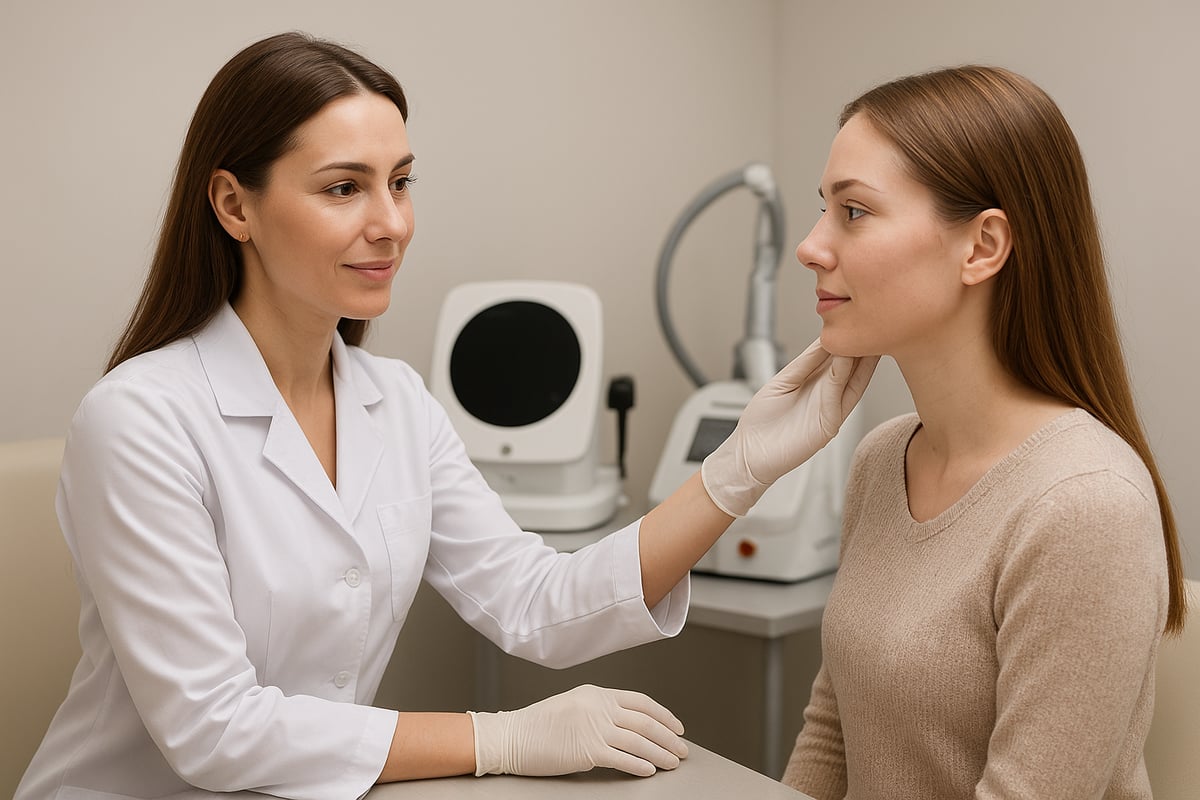
Step 1: Consultation and Skin Assessment
The first phase of laser therapy for skin rejuvenation is an in-depth consultation. A qualified provider will evaluate your skin’s condition, review your medical history, and discuss your goals. Digital imaging and advanced skin analysis tools are often used to assess texture, pigmentation, and elasticity.
This step is crucial for setting realistic expectations. Your provider will explain the types of laser suitable for your skin type, potential outcomes, and any risks. Open communication ensures that your treatment plan is customized for your unique needs. For best results, always choose a clinic with certified professionals who specialize in laser therapy for skin rejuvenation.
Step 2: Pre-Treatment Preparation
Proper preparation is essential for a safe and effective laser therapy for skin rejuvenation session. Your provider will give you detailed guidelines to follow in the days leading up to your appointment, such as:
- Avoiding sun exposure and tanning beds
- Discontinuing certain skincare products (like retinoids or exfoliants)
- Reviewing all medications and checking for allergies
- Arranging a patch test if you have sensitive skin
Adhering to these steps helps minimize the risk of side effects and ensures your skin is in the best possible condition for treatment. Preparation also involves discussing any concerns with your provider, allowing for adjustments to your laser therapy for skin rejuvenation plan.
Step 3: The Laser Session
On the day of your laser therapy for skin rejuvenation, your skin will be cleansed thoroughly. A topical numbing cream is applied to maximize comfort. The provider will calibrate the laser device based on your skin’s unique characteristics and the targeted concerns.
The session typically lasts between 30 and 90 minutes, depending on the size of the treatment area. You may feel warmth, tingling, or mild discomfort during the procedure. For example, fractional lasers deliver energy in precise microbeams to stimulate collagen and resurface the skin. The effectiveness and safety profile of these lasers are well documented in clinical research, as seen in studies on clinical outcomes of fractional lasers.
After the laser therapy for skin rejuvenation session, your provider will give you immediate post-treatment instructions to optimize recovery.
Step 4: Immediate Post-Treatment Care
Right after your laser therapy for skin rejuvenation, your skin may feel warm and look pink or slightly swollen. Your provider will apply cooling packs or soothing gels to calm the treated area. Protective ointments may also be used to help lock in moisture and support healing.
It is important to avoid touching or picking at your skin during this period. Managing redness and swelling is usually straightforward, and most patients experience noticeable improvement in comfort within hours. Following your provider’s aftercare instructions is key to a smooth recovery after laser therapy for skin rejuvenation.
Step 5: Recovery and Aftercare
Recovery after laser therapy for skin rejuvenation varies based on the type of laser used and your skin’s sensitivity. Here is a quick overview:
| Symptom | Typical Duration | Aftercare Tips |
|---|---|---|
| Redness | 1–3 days | Use gentle cleanser, moisturize |
| Peeling | 3–7 days | Avoid exfoliating, stay hydrated |
| Full Recovery | 2–3 weeks | Practice strict sun protection |
During this phase, you should avoid makeup, strenuous exercise, and heat exposure. Consistent sun protection is vital to prevent pigmentation changes. If you notice signs of infection or unexpected discomfort, contact your provider immediately. Diligent aftercare supports the long-term success of laser therapy for skin rejuvenation.
Realistic Results: What to Expect After Laser Skin Rejuvenation
Curious about what happens after laser therapy for skin rejuvenation? Understanding realistic outcomes helps you set clear expectations and plan for your best skin yet.
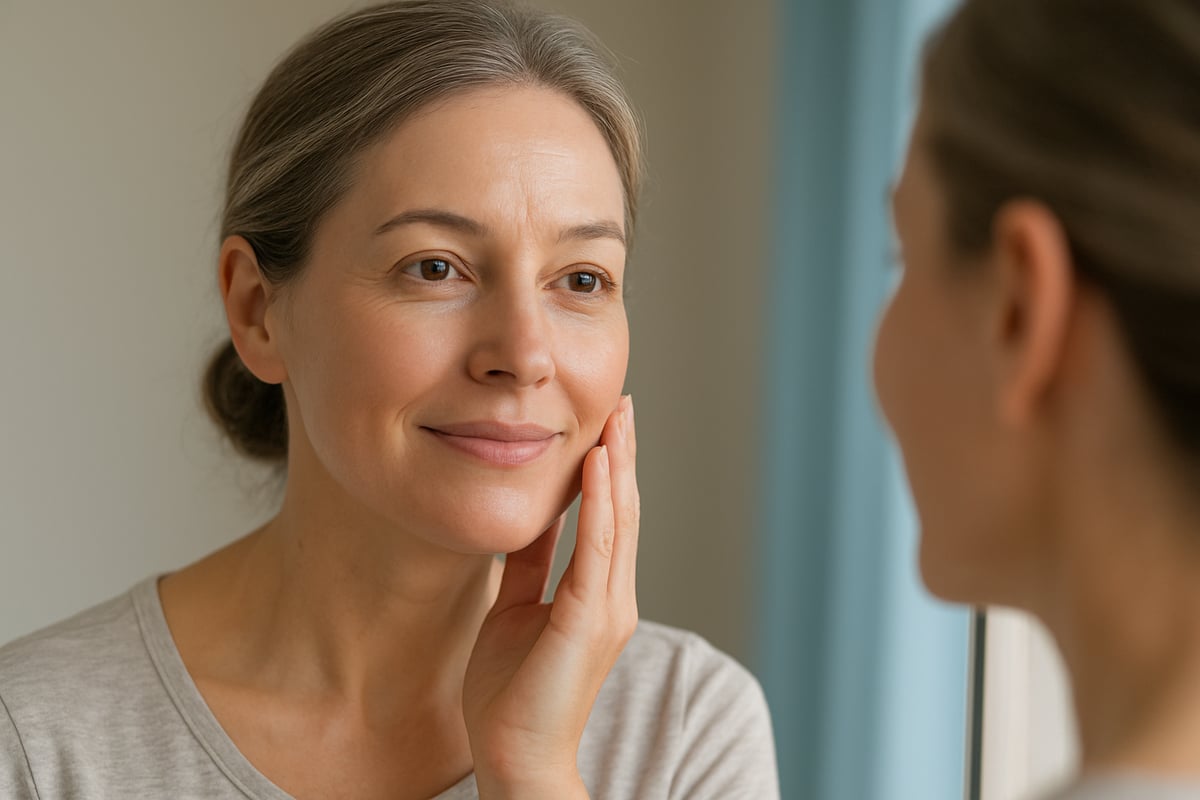
Visible Improvements and Timelines
Laser therapy for skin rejuvenation delivers gradual yet noticeable results. Most patients see an initial glow and smoother texture within days of their first session. Collagen production continues to improve skin quality over the following weeks.
- After 1 session: Mild improvement in radiance and texture.
- After 3 sessions: Up to 80 percent enhancement in skin clarity, tone, and firmness, as noted in clinical studies.
- After 6 months: Continued refinement of fine lines, wrinkles, and sunspots as collagen rebuilds.
Before-and-after photos from patient-reported outcomes after facial laser resurfacing show that about 70 percent of patients notice clear improvement by week 4. The process is progressive, with most changes becoming more visible over time.
Longevity and Maintenance of Results
How long do the results of laser therapy for skin rejuvenation last? Several factors play a role, including your age, skin type, and lifestyle habits. If you protect your skin from the sun and follow a good skincare routine, benefits can last 1 to 2 years.
Annual maintenance sessions are recommended to sustain collagen production and keep your skin looking its best. Your provider may suggest a personalized skincare regimen to help prolong your results.
Risks, Side Effects, and How to Minimize Them
Laser therapy for skin rejuvenation is considered safe when performed by trained professionals. However, it is normal to experience some mild side effects.
Common effects include:
- Redness (1–3 days)
- Swelling (up to 48 hours)
- Mild discomfort similar to a sunburn
- Temporary peeling
Rare complications are possible, such as pigmentation changes, scarring, or infection, but these occur in less than 2 percent of cases with modern devices. To minimize risks, ensure your provider has expertise with your skin type and follows strict protocols. Always adhere to aftercare instructions, including avoiding sun exposure and harsh products while healing.
Cost Considerations and Value
The cost of laser therapy for skin rejuvenation in 2025 ranges from $500 to $2000 per session, depending on the device used and the size of the treatment area.
Many clinics offer package deals or financing options for multiple sessions. While the upfront investment may seem high, consider the long-term benefits of smoother, more youthful skin with minimal downtime compared to surgical alternatives. Weigh the cost against improved confidence and lasting results.
Choosing the Right Provider: What to Look For in 2025
Selecting the right provider for laser therapy for skin rejuvenation is crucial for both safety and results. In 2025, advances in technology and growing demand make it even more important to evaluate clinics and practitioners with a careful eye. Here is what you should look for when considering your options.
Credentials and Experience
When seeking laser therapy for skin rejuvenation, provider qualifications are non-negotiable. Always check that your clinic employs board-certified dermatologists or licensed estheticians who have specific experience with the latest laser devices. Years of hands-on work with lasers such as PicoWay or CANDELA GentleMax Pro can make a significant difference in both safety and results.
Look for evidence of ongoing training. The field of laser therapy for skin rejuvenation evolves rapidly, and professionals should regularly update their certifications. Ask about their experience with your specific skin concern and device. Providers who participate in industry conferences or research often deliver the most up-to-date care.
A reputable clinic will gladly provide credentials and answer questions about their expertise. Do not hesitate to ask for before-and-after photos of past clients. This transparency is a good sign that they value both your safety and satisfaction. Choosing a provider with a proven track record ensures the best outcomes from laser therapy for skin rejuvenation.
Assessing Technology and Safety Standards
The technology behind laser therapy for skin rejuvenation is just as important as the provider’s skill. Clinics should use FDA or Health Canada-approved devices, such as the PicoWay system. These machines offer advanced results with enhanced safety features, making them suitable for a wider range of skin types and concerns.
Ask about the clinic’s safety protocols, including cleaning, sterilization, and protective measures for patients. Leading clinics invest in real-time skin monitoring, cooling systems, and AI-driven customization for optimal comfort and results. For a deeper understanding of device capabilities, you can review PicoWay Laser Treatments to see how advanced lasers are used for precision and safety.
Regular maintenance and calibration of laser equipment are essential. Providers should also conduct thorough patch testing to minimize risks. According to Laser effects on skin rejuvenation, modern devices significantly reduce complications when proper protocols are followed. Always ensure your chosen clinic prioritizes both technology and safety in every session.
Personalized Consultation and Treatment Planning
A successful laser therapy for skin rejuvenation journey begins with a personalized consultation. Top providers use digital imaging and advanced skin analysis tools to assess your needs. This allows them to design a custom protocol tailored to your skin type, age, and goals.
During the consultation, clear communication is essential. Your provider should explain the benefits, expected results, and possible side effects of laser therapy for skin rejuvenation. They should also review your medical history and discuss realistic outcomes. This individual approach helps set expectations and maximizes satisfaction.
Reviews, Results, and Patient Satisfaction
Patient feedback is a valuable resource when choosing a provider for laser therapy for skin rejuvenation. Verified testimonials on platforms like Google, RealSelf, or the clinic’s website offer insights into real-world experiences. Before-and-after photo galleries can demonstrate the provider’s ability to achieve natural-looking results.
Look for consistent praise regarding professionalism, results, and aftercare. High patient satisfaction rates and a strong reputation indicate that the clinic delivers quality care. Reliable providers are transparent about their outcomes and encourage honest feedback from clients.
Accessibility and Support
Practical considerations also matter when selecting a provider for laser therapy for skin rejuvenation. Choose a clinic with a convenient location and flexible appointment times to fit your schedule. Aftercare support is vital, so ask about follow-up visits and how the clinic manages post-treatment concerns.
Many leading clinics offer financing or package deals to make treatments more accessible. Responsive communication, both before and after procedures, reflects a commitment to patient well-being. A provider who offers guidance throughout the process ensures a positive and stress-free experience.
Frequently Asked Questions About Laser Therapy for Skin Rejuvenation
Curious about what to expect from laser therapy for skin rejuvenation? Below, we address the most frequently asked questions to help you make an informed decision and achieve the best possible results. These answers are based on the latest research and clinical expertise in 2025.
Safety and Suitability
Laser therapy for skin rejuvenation is recognized as a safe procedure for most skin types when performed by a qualified provider. However, not everyone is a candidate. Those with active infections, certain medications, or who are pregnant should avoid treatment. Fitzpatrick skin type is considered when selecting the device and settings to minimize risk. A professional consultation is essential to assess your skin, medical history, and expectations. Always verify your clinic uses approved technology and follows strict safety protocols. This ensures the safest experience and optimal outcomes for laser therapy for skin rejuvenation.
Procedure Experience
Many patients wonder if laser therapy for skin rejuvenation is painful. Most describe sensations of warmth, tingling, or mild stinging, but topical numbing creams are applied to enhance comfort. Sessions typically last 30 to 90 minutes, depending on the area treated and device used. Immediately after, your skin may feel sunburned and appear slightly red or swollen. Treatments can be combined with other modalities like Eclipse Microneedling in Toronto for enhanced results. Your provider will tailor the experience to your needs, ensuring a safe and controlled process.
Results and Expectations
Results from laser therapy for skin rejuvenation are gradual. You may notice an initial glow within days, but the most significant improvements emerge over several weeks as collagen production increases. Many see visible changes after one session, with optimal results after three or more treatments. Clinical studies show 70 percent of patients report noticeable improvement by week four. For those seeking enhanced outcomes, laser combination therapies superior to monotherapies are supported by recent research, offering greater efficacy and satisfaction.
Risks and Recovery
Common side effects of laser therapy for skin rejuvenation include redness, swelling, and mild discomfort, resolving within a few days. Rare risks such as pigmentation changes, scarring, or infection are minimized with modern devices and experienced providers. Proper aftercare, including sun protection and gentle skincare, greatly reduces complications. Recovery time varies by treatment depth, but most patients can resume normal activities within one to three days. If you notice unusual symptoms like severe pain or prolonged swelling, contact your provider promptly for guidance.
Cost and Value
The cost of laser therapy for skin rejuvenation in 2025 ranges from $500 to $2,000 per session, depending on the area treated and technology used. Many clinics offer package deals or financing options, making treatments more accessible. While the upfront investment may seem high, the long-term benefits—such as smoother, firmer, and clearer skin—often outweigh the cost. There are rarely hidden fees if you choose a reputable provider. When comparing clinics, consider both price and quality to ensure the best value for your skin health.

